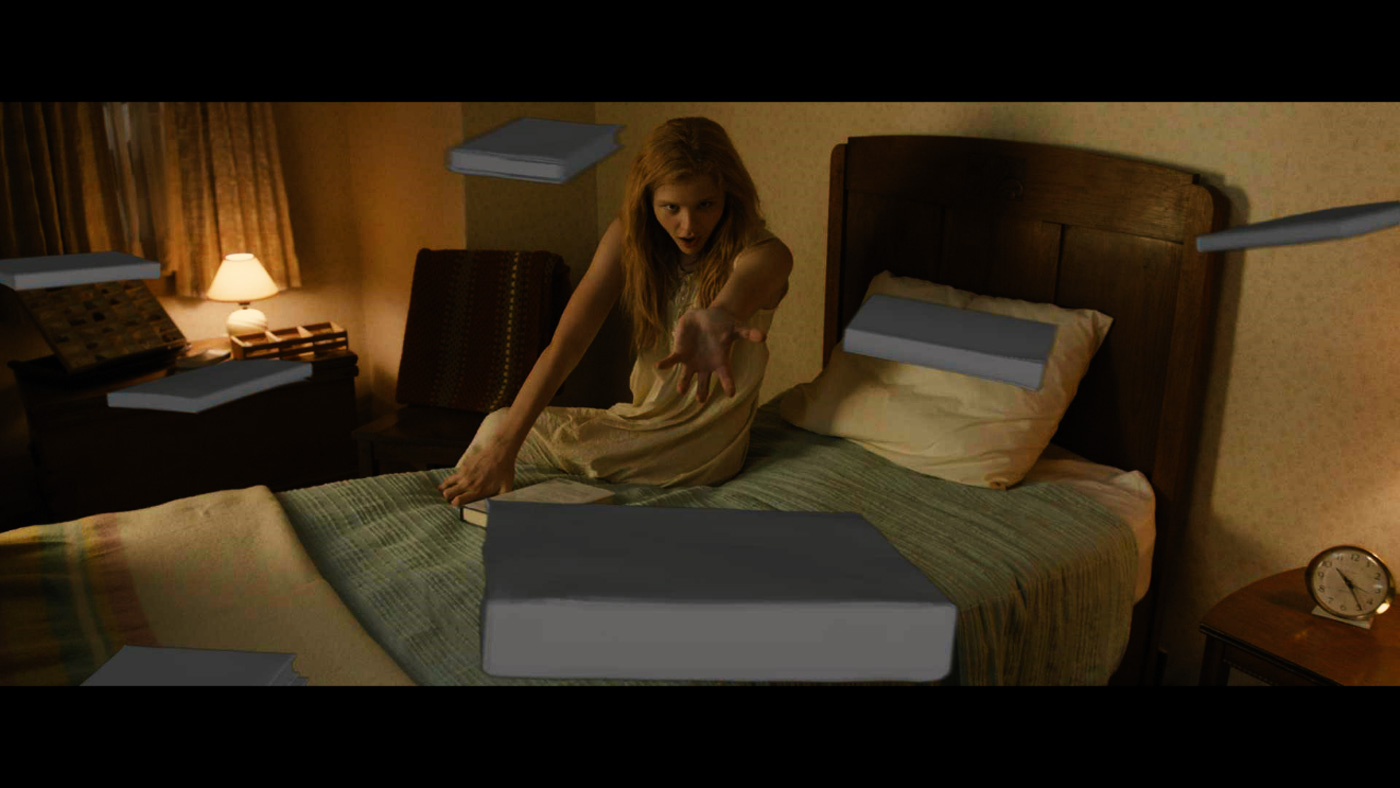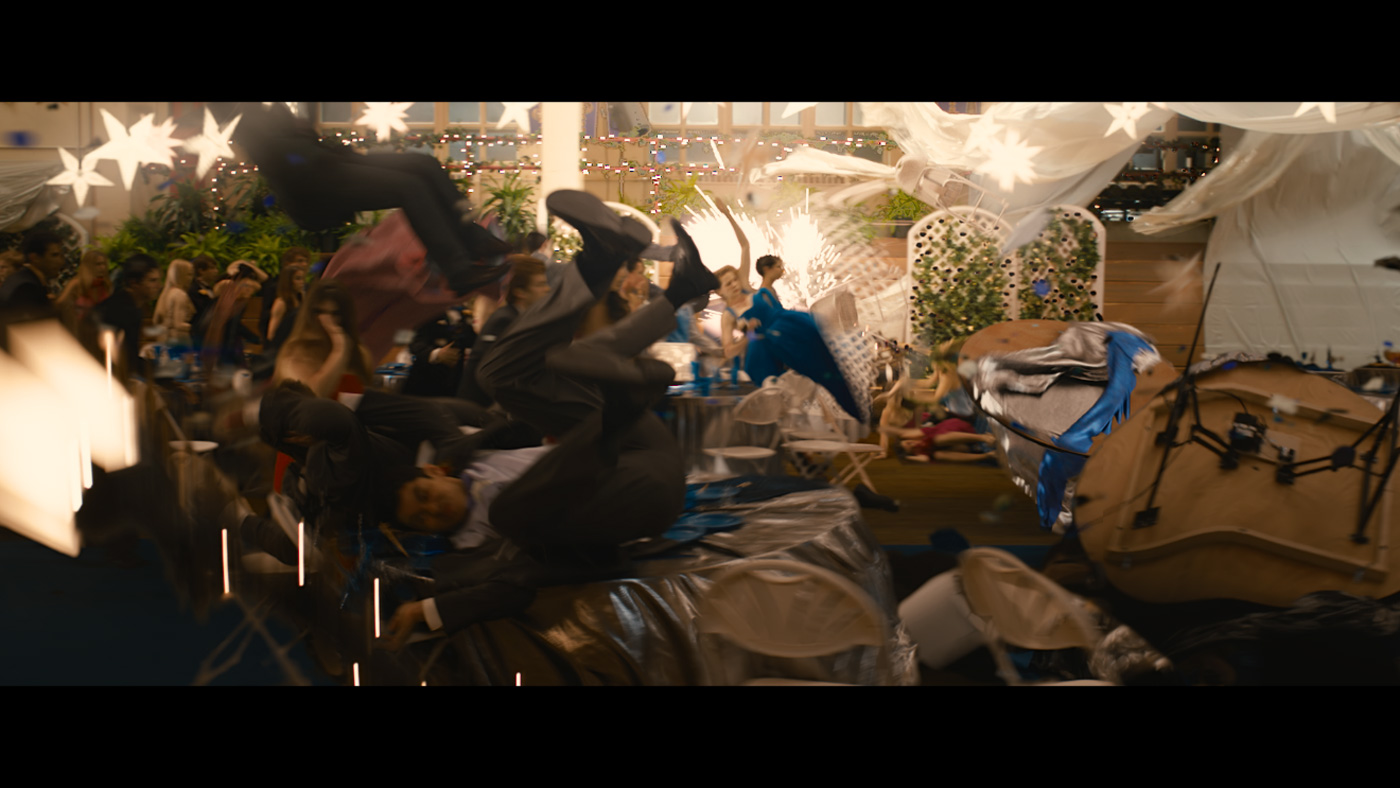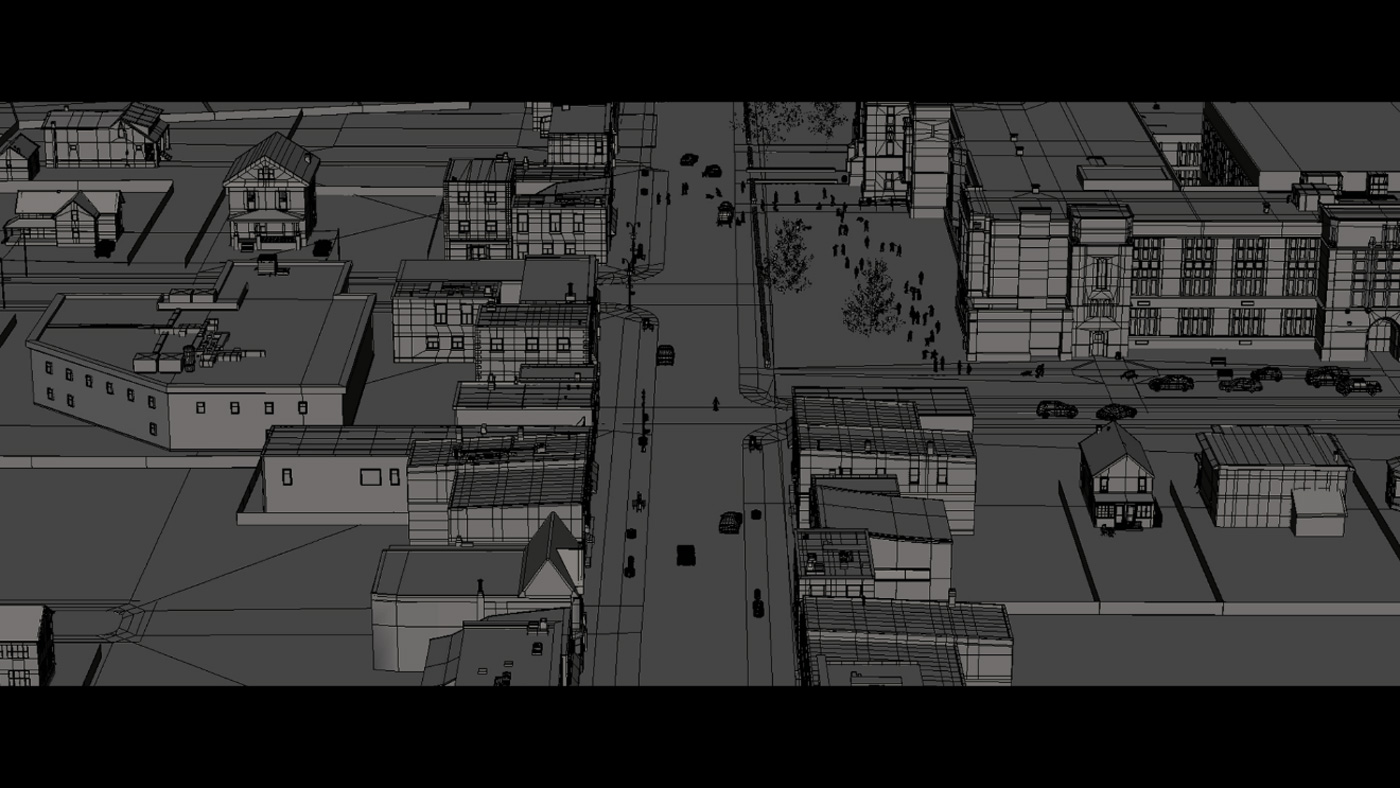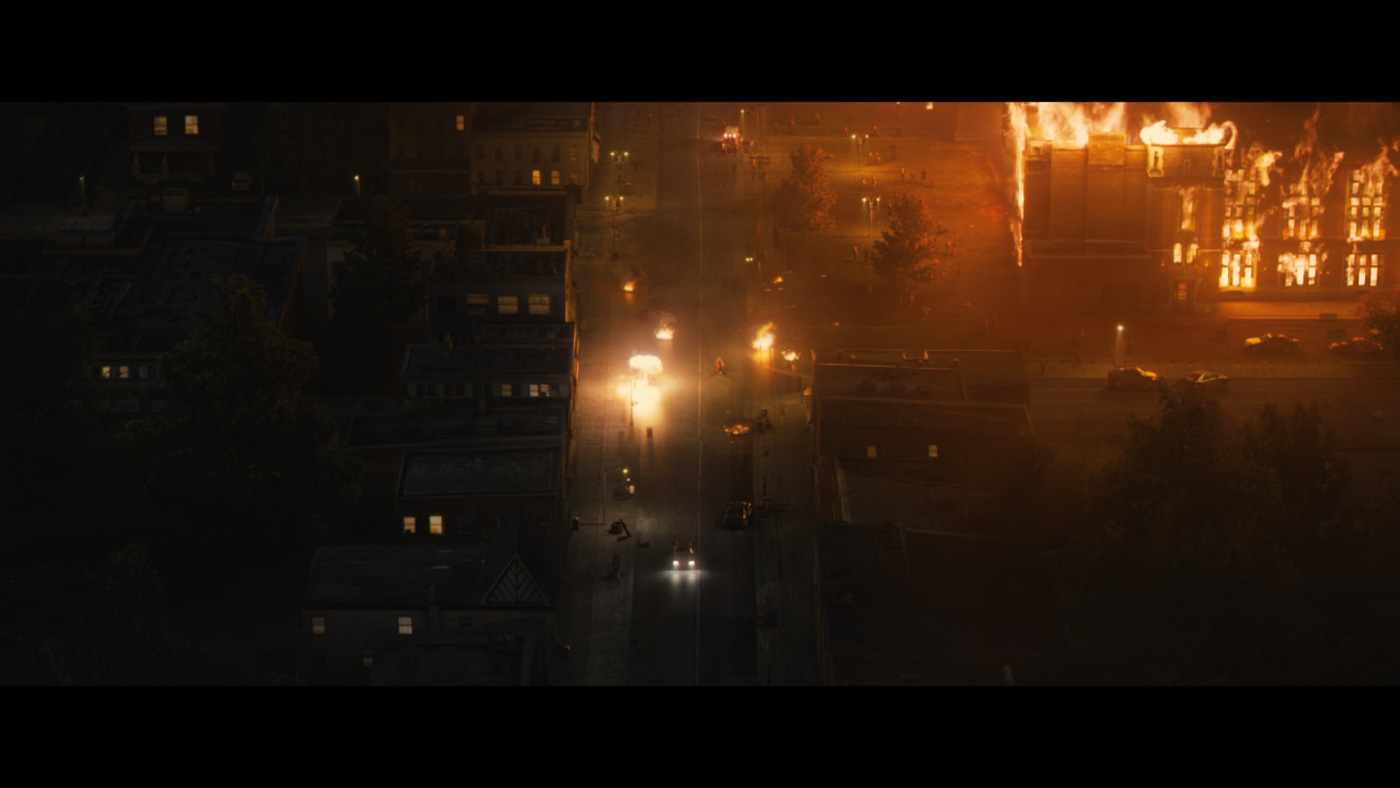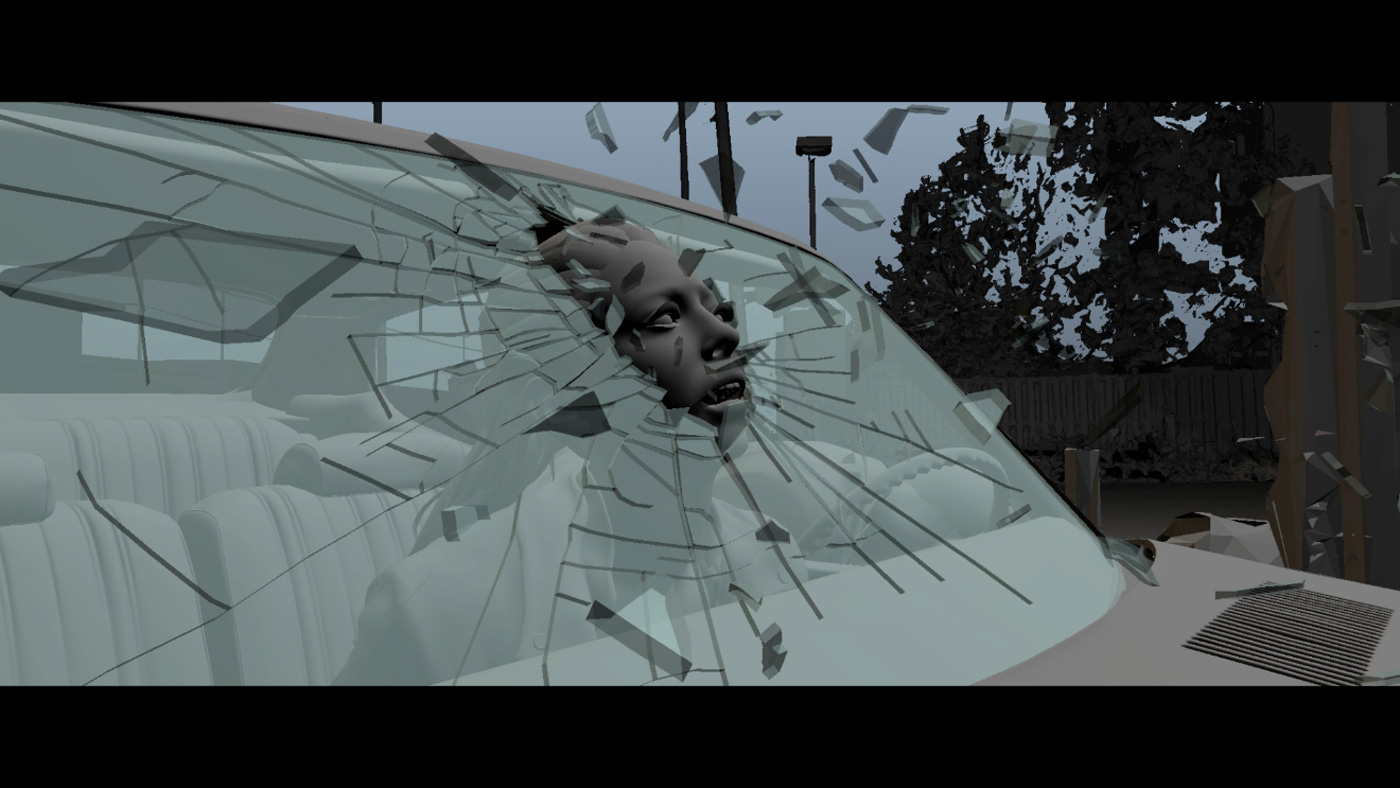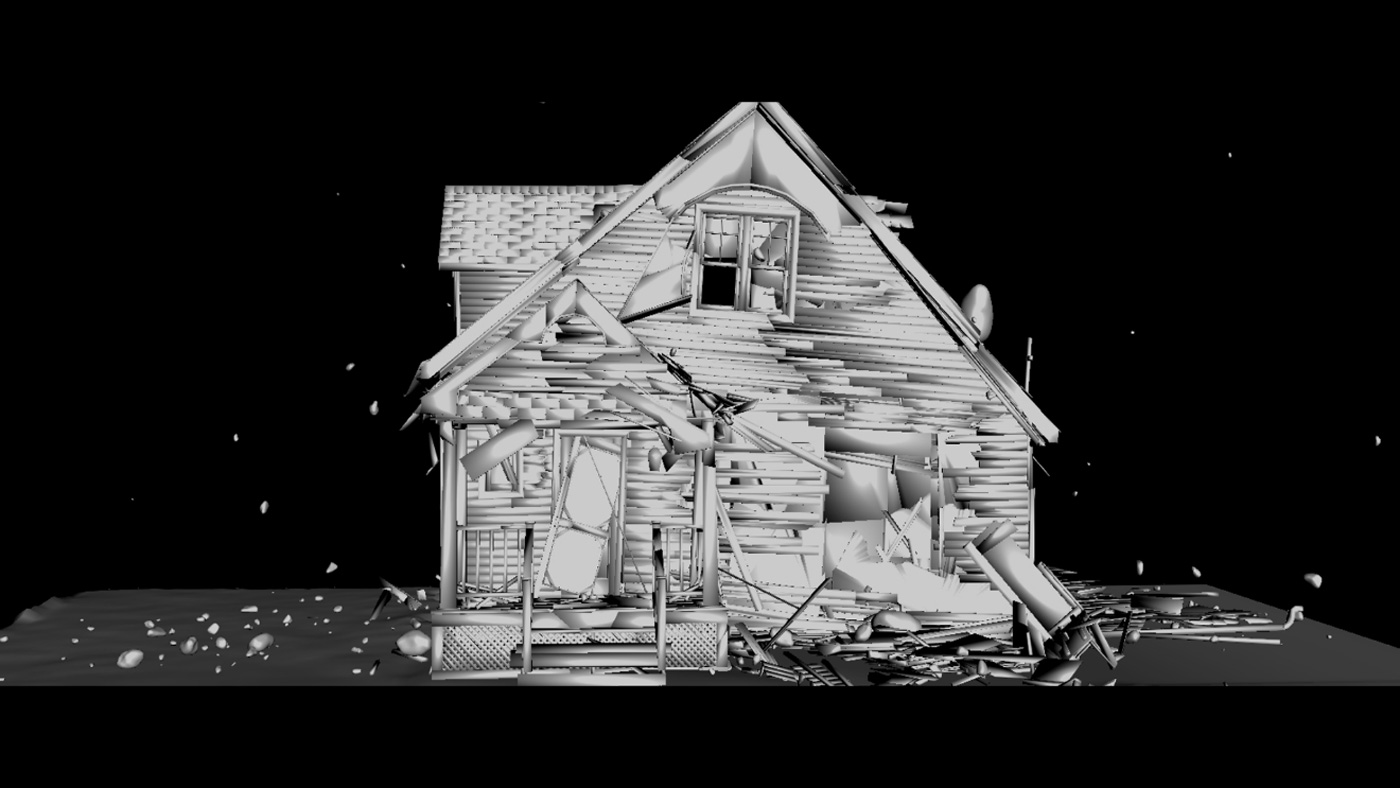In 2012, Eric Robinson had explained to us about the work of Mr. X on RESIDENT EVIL: RETRIBUTION. He is now back to talk about the remake of CARRIE.
How was your collaboration with director Kimberly Peirce?
Kim is a very passionate, story driven director. During shooting, she was very keen on exploring what could be done with a given shot or sequence. It was a common question from her, “How can we make this better?” Before photography started, we were building test shots, to explore different concepts of how VFX could complement and enhance the story.
What was her approach about the visual effects?
Kim was very focused on using VFX in an emotional, story driven way. She felt that there had to be intent in a shot for it to make the final cut.
Visual effects allowed her a more control in the creative process of a shot than there was time for on set. There is a moment in the film where Carrie suspends her mother in the air using her telekinetic powers. The plates were shot with Julianne Moore on wires, and to add “strange motion” a stuntman in a greenscreen suit pulled and pushed her around. Taking the shot to the next level required us to lift Julianne off the plate, and add more animation, to give the wire work a creepy, unnatural feel.
How did you organize the work with Dennis Berardi?
Dennis was the overall show VFX Supervisor and was on-set for the principle photography. Due to the initially tight deadline, and need for preview deliveries, we were working on shots in earnest at the studio while Dennis was still shooting on set.
What was your role on this project?
For Carrie, I was the Digital Effects Supervisor for the majority of the project and VFX supervisor on two sets of additional photography.
Can you tell us more about the previz process?
We began by creating animatics of the storyboards, with music, foley and dialog. This was done in After Effects and Final Cut Pro. Moments like the car crashing into the gas station were previs’d to help block out the camera work. The most significant portion of previs was the final house destruction scene. In many cases, the previs evolved into final shots over time.
How did you approach the telekinesis powers of Carrie?
It was very important to keep the effects physical, without being magical. And story wise, there is a very important progression of Carrie’s powers, how she learns to use them, how they grow in power and how they eventually consume her.
Can you tell us more about her first test with the books and bed?
Early in the film there is the Floating Book sequence. This was originally conceived as a set of practical SPFX shots. After a rough cut of the sequence, Kim wanted to explore a more playful and dramatic use of the telekinetic power. Carrie causes the books to tentatively rise, and then sway, and then fly around as if juggled. The animation team had a lot of fun with this sequence. We had to introduce more interaction between the CG books and live action environment, to provide an audio cue for Carrie’s mother to investigate the sound. We had the books from the set in the studio, and we threw them around a bit to get a feel for how they would bounce and land. We felt bad for the people one the floor below us!
The books had plastic covers, which allowed for nice highlight hits and reflections of the bedroom. HDRI’s of the set made dialing-in the lighting on the books a breeze.
How did you manage the fire used by Carrie during the party?
There were two instances of VFX fire in the prom scene:
The biggest fire in the film is where the school burns after the prom. We had developed a fire and smoke plume system for our work in RESIDENT EVIL: RETRIBUTION, where we were burning a post-apocalyptic Washington DC. We used Houdini’s Pyro for the bulk of this.
The other moment for VFX fire was when Carrie throws a decorative moon. We knew from the start we had to go CG with this as the moon needed to be levitated up and then allowed to hover before Carrie “throws it” with her TK. With practical SPFX fire in the background, we had in-plate reference for fire character and intensity. We simulated the flames and smoke in Houdini.
Have you created digi-doubles for the party sequence or is it people on wire?
We created digital doubles for the prom sequence. There is a beat in that sequence where Carrie creates a TK “wave”. The plates for these shots were motion-controlled, multi-layered and included stunt performers being pulled on wires. Once we did a slapcomp of the available layers and reviewed with the director, we determined that we needed more! Digi-doubles were animated in a more violent fashion than the wire-work stunt performers were able to do.
At the end of the prom sequence, we have two big all CG aerial shots. Massive fires are consuming the high school. We needed digi-doubles for the all CG exterior shots of the school burning, and Carrie’s exit.
How did you enhance the gore effects?
Where possible the production captured in camera as much as they could with regards to gore. Through the prom sequence, we “helped” the gore on Carrie’s face as it dried out between takes and in the edit, it felt like it was lacking life. We enhanced wetness in comp, brightening blood and adding rolling highlights. We also had to help solve continuity issues during the moment when the blood is being dumped on Carrie’s head. We added aerial blood, flying over Carrie’s face, and as it passes over hear face we revealed blood on her face, matching the approved look and pattern.
Carrie destroyed a road to capture Chris. Can you tell us more about it?
There are two distinct actions in this sequence. Firstly we had to create a fissure that chases the car that Chris is driving in. Secondly we created a massive sinkhole that opens up in the road that forces the car to turn around.
For the road fissure shots we used a hybrid approach. We modeled/lookdev’d a fractured road, that we then revealed in comp. To prevent this from feeling like a simple wipe, we simulated dust and debris kick-up that could be timed to match the leading edge of the fissure. It needed to be a flexible approach, as the timing of the fissure had to be direct-able. The key in integration for this moment was having some of the car’s taillight spilling onto the dust from the fissure.
The large sinkhole that is created to stop the car was a full FX simulation. We wanted to be able to distinguish between the asphalt road surface and the underlying.
Can you explain in details about the slow-motion of Chris hitting the windshield?
This was a tremendously satisfying shot! It is the most dramatic death in the film. It was originally conceived as a multi camera composite but became a fully CG shot to allow for the extreme violence needed for her impact with the car’s windshield. A digi-double was used to get most of the way to a complete shot, but to further enhance the likeness to the actor, we projected plate frames onto the alembic ABC files in Nuke. Glass and blood sims were done in Houdini. The double and car were rendered in Maya’s Vray. This was one of many shots which relied on combining renders from Houdini in Mantra with Maya and Vray.
Can you tell us more about the destruction process and especially for the house?
The CG build of the house required a lot of coordination between our assets department and the FX team who were simulating the house’s destruction. Due to the completeness of the destruction, we had to model the interior, exterior, internal structures as well as even adding furniture. These modeled elements needed to be build “watertight”, so that the sims would solve and not create intersecting geometry. Once this build was ready for simulations, constraints had to be placed on the many objects that make up the house model so that when the house would fall apart on cue under the impacts of the falling stones, earth tremors and a sinkhole opening up below!
How did you manage the falling rocks?
The falling rocks were a combination of hand animation and simulations using Houdini. Large hero stones were animated to impact in a deliberate, but chaotic looking array. Smaller stones were simulated around them. The sims on the small stones created interesting interactions and bounces. Lastly for the stones, we simmed kicked up dust dirt and debris for all the impacts.
Are there any invisible effects you want to reveal to us?
The interior set for Carrie’s house had to be modular and flexible to allow for various camera placements, wirework and lighting design. This functionality resulted in some VFX shots where we had to cover gaps in the set, like covering up incomplete ceilings.
It’s work that is easily accomplished, but often necessary.
Was there a shot or a sequence that prevented you from sleep?
The exterior house destruction sequence was a real worrisome portion of the film. After building post-vis shots for the destruction, we had to move to more physical, realistic simulations of the destruction. The build of house asset took twice as long as we initially forecast. We would promote a model from assets to the FX department for testing, it wouldn’t break in the correct way and had to go back to assets. While this was going on, we were under a lot of pressure from production to provide sound temps, and temp versions for early previews.
What do you keep from this experience?
Take nothing for granted.
How long have you worked on this film?
We were on the show for almost a year and a half. We were involved very early in the process with storyboards and previs. During production we were informed of a delayed release date, moving from spring to Halloween.
How many shots have you done?
We have 241 shots in the final feature. There were many OMITs and mockups that were completed as well.
What was the size of your team?
Over the course of the project we had over 130 artists involved.
What is your next project?
Since completing CARRIE, I wrapped THE BEST MAN HOLIDAY and ENDLESS LOVE am currently working POMPEII.
A big thanks for your time.
// WANT TO KNOW MORE?
– Mr. X: Official website of Mr. X.
© Vincent Frei – The Art of VFX – 2013



